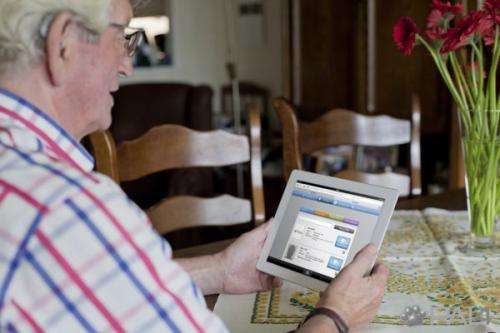Technology cuts the cost of dementia care

Due to its ageing population, the Netherlands is seeing an explosive growth in the number of dementia patients. This is expected to increase from 250,000 in 2013 to 500,000 in 2050. Cost cutting in the healthcare sector, together with a worsening shortage of care workers, means that solutions are needed if dementia sufferers are to be provided with good quality care. The University of Twente's eHealth Research Center is exploring the use of technological aids, like sensors, touch screens or games, to help such patients. PhD student Nienke Nijhof analysed the use of various tools in dementia sufferers. Ms Nijhof asserts that "Technology can offer patients safety and support. I attempted to determine whether the use of these tools might enable patients to live independently for longer. This could save the health service as much as 800 to 2800 euros per patient per month. I advocate the inclusion of technological aids in the health insurance package, to facilitate their large scale use."
Nienke Nijhof carried out qualitative and quantitative research in four different technology projects. These projects involved patients at a nursing home and those still living at home, throughout the Netherlands. All four eHealth applications produced positive results. Ms Nijhof "They support the welfare both of the patients and their carers (who are often family members). We also see improvements in the standards of care." The caregivers who were interviewed said that eHealth effectively gives them an extra pair of eyes and ears. It warns them of potentially hazardous situations that they would otherwise find difficult to anticipate. Finally, the use of technology can enable patients to live independently for much longer, which delivers significant cost savings for the health service.
Touch screens, Chitchatters, sensors and sleep watches
The first application tested by Nienke Nijhof was a touch screen. Patients used this to check their diary, for example, for appointments or reminders about taking medication. Ms Nijhof says that "Initially, patients might call their caregiver as many as thirty times to ask the same question (having forgotten that they had already done so). Now, with remote access to the diary, caregivers will get more rest." The second application involved a game, "the Chitchatters". This involved showing films or playing music to patients in a nursing home. The films and music used were appropriate to the patients' age or background, and helped to trigger memories. The third technology, sensors, recorded abnormal situations at various places in the home. For example, if someone goes to the toilet seven times during the night, when they usually only go once. In this instance, the sensors would automatically alert the caregiver. Finally Nienke Nijhof investigated the use of a watch that monitors the sleep-wake cycle of dementia patients in a nursing home environment. The information obtained can be used to modify certain procedures, such as making the nightly rounds at an institution.

















